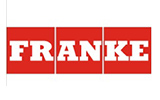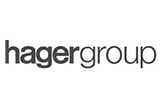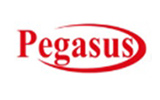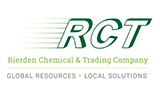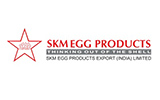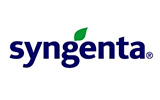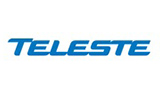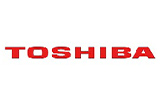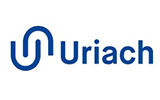
Market Overview
The Indonesia consumer electronics market is poised for strong and sustained growth between 2025 and 2033, driven by a combination of economic expansion, technological innovation, and increasing consumer demand for advanced electronic devices. Valued at approximately USD 15 billion in 2024, the market is expected to grow at a CAGR of 7.8%, reaching USD 30 billion by 2033. This growth is underpinned by several factors, including the country's rapidly growing middle class, the ongoing digital transformation, and rising demand for smartphones, home appliances, wearables, and other smart consumer electronics.
Indonesia, as one of the largest and fastest-growing economies in Southeast Asia, offers a vibrant consumer electronics market, which is becoming increasingly competitive. The demand for consumer electronics is being propelled by the expanding urban population, greater disposable income, and rising technological awareness among Indonesian consumers, particularly in metropolitan areas like Jakarta, Bandung, and Surabaya. The advent of smart home technology, internet of things (IoT) devices, and AI-powered gadgets has also contributed significantly to the increasing consumption of electronic products.
Key Market Drivers
Economic Growth and Rising Disposable Incomes
Indonesia's economy has been growing steadily, with an expected annual GDP growth of 5.2% over the next several years. This economic expansion is driving an increase in disposable incomes, particularly in urban areas, which is enabling more Indonesian consumers to invest in advanced electronic products. With the growing middle class, consumer spending on electronics, especially smartphones, laptops, home appliances, and entertainment systems, is expected to increase significantly during the forecast period.
In 2025, urban areas will continue to account for the largest portion of consumer electronics sales, driven by more affluent consumers and younger professionals seeking the latest gadgets and technological innovations. The desire for smartphones, smart TVs, home appliances, and personal tech devices like wearables is rising among Indonesia’s rapidly expanding middle class.
Technological Advancements and Demand for Smart Devices
The Indonesian consumer electronics market is undergoing a technological revolution, with advancements in artificial intelligence (AI), IoT, and 5G technology playing a significant role in shaping consumer preferences. Smart devices, including smartphones, smart home systems, and wearable devices, are becoming increasingly popular as Indonesian consumers look for ways to integrate technology into their daily lives.
The introduction of 5G technology is also expected to significantly impact the market, as faster internet speeds will enable the adoption of more advanced and connected devices. The smartphone segment is the largest in the consumer electronics market and continues to grow, with demand for mid-range and premium smartphones rising among young and tech-savvy consumers.
As more consumers embrace smart home devices like smart speakers, smart lighting systems, and intelligent home appliances (e.g., refrigerators, washing machines), the demand for IoT-enabled devices is expected to continue its upward trajectory. Furthermore, there is a growing demand for wearable electronics, such as smartwatches and fitness trackers, as Indonesians become increasingly health-conscious and interested in lifestyle management.
Expansion of E-Commerce and Online Retail Channels
The growth of e-commerce platforms in Indonesia has revolutionized the way consumers purchase electronics. Online shopping offers convenience, competitive pricing, and access to a wider range of products, making it an increasingly popular choice for consumers. The rise of e-commerce platforms such as Tokopedia, Shopee, and Bukalapak has made consumer electronics more accessible, especially for consumers in suburban and rural areas, where access to physical retail stores may be limited.
By 2025, online retail is projected to account for 30-35% of total consumer electronics sales in Indonesia. The e-commerce trend is expected to further accelerate as online platforms continue to improve their services, offering home delivery, easy payment methods, and product variety. The ease of comparing prices and reading product reviews is also driving the shift toward online shopping for electronics in Indonesia.
Increased Demand for Sustainable and Energy-Efficient Products
Indonesian consumers are becoming more environmentally conscious, leading to a growing demand for energy-efficient and sustainable consumer electronics. Products that consume less power, have longer lifespans, and are made using environmentally friendly materials are increasingly preferred. This trend is particularly notable in home appliances, including smart refrigerators, air conditioners, and washing machines, where consumers are prioritizing energy efficiency to reduce their carbon footprint and lower utility bills.
The Indonesian government is also promoting sustainability in the consumer electronics industry through various initiatives aimed at reducing energy consumption and minimizing e-waste. As the awareness of sustainability continues to grow, consumers are likely to demand more eco-friendly products, pushing electronics brands to adopt greener technologies.
Rise of Digital Transformation and Content Consumption
The rise of digital content consumption, driven by streaming services and gaming, is another factor driving demand for consumer electronics in Indonesia. The increasing popularity of video streaming services such as Netflix, Disney+, and local platforms like iFlix is fueling the need for smart TVs, home theater systems, and audio devices that provide a more immersive viewing experience.
Moreover, gaming has become a mainstream form of entertainment in Indonesia, particularly with the growth of mobile gaming. With mobile gaming becoming a key part of Indonesian culture, the demand for gaming-related electronics, including smartphones, gaming consoles, and headsets, is expected to increase significantly.
Market Segmentation
By Product Type:
By Distribution Channel:
By Consumer Demographics:
Competitive Landscape
The Indonesian consumer electronics market is highly competitive, with several local and international players. Some of the key players include:
Challenges
Future Outlook
The Indonesia consumer electronics market is expected to continue growing at a CAGR of 7.8% from 2025 to 2033, driven by:
By 2033, the market is expected to reach USD 30 billion, with the smartphone, home appliance, and wearables segments continuing to drive market growth.
Conclusion
Indonesia's consumer electronics market presents significant growth opportunities, driven by economic expansion, technological advancements, and changing consumer behavior. As consumers increasingly adopt smart, connected, and energy-efficient devices, brands that focus on innovation and affordability will thrive. The market will also benefit from the ongoing expansion of e-commerce and the growing demand for home entertainment and personal electronics, making Indonesia an attractive destination for both local and international consumer electronics brands.




